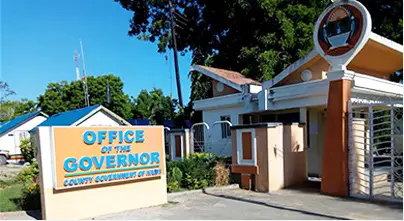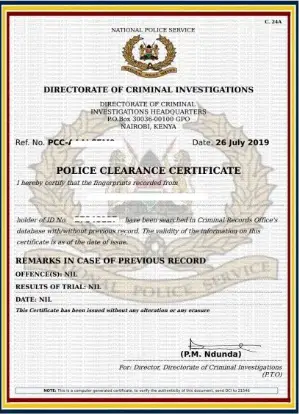Hey there, fellow diplomatic vehicle owners! If you’re reading this, chances are you’ve got a diplomatic ride and it’s time to get it re-registered with the National Transport and Safety Authority (NTSA).
Don’t fret; we’re here to guide you through the process step by step, making it as smooth as a freshly paved road. So, let’s get started on this journey to keeping your diplomatic wheels turning legally and safely.
What You Need for Re-registration
Alright, let’s dive into the nitty-gritty of the re-registration process. Here’s a checklist of everything you’ll need:
1. Duly Filled Form A
Form A is your starting point. It’s the official document that kicks off the re-registration process. Make sure you fill it out accurately and neatly, as this will save you from unnecessary delays.
2. Duly Filled Form C
Form C is the companion to Form A. Together, they ensure all your details are correctly recorded. Think of them as a dynamic duo for your vehicle’s legal transformation.
3. Original PRO 1C/DA
This one’s a bit of a mouthful, but it’s crucial. PRO 1C/DA stands for Provisional Registration Certificate, and it’s your proof of the vehicle’s initial registration. Keep this safe—it’s your golden ticket.
4. Original Entry Document
The original entry document is like the birth certificate of your vehicle. It’s the official record of when and how it entered Kenya. Without it, you’ll hit a roadblock in the re-registration process.
5. KRA PIN for Buyer and Seller
Don’t forget your KRA PIN! Both the buyer and the seller need to provide their Kenya Revenue Authority Personal Identification Numbers. It’s like the handshake that seals the deal.
6. Copy of Passport/Diplomatic ID (Seller)
If you’re the seller, you’ll need to provide a copy of your passport or Diplomatic ID. This ensures the transaction is legitimate and transparent.
7. Copy of ID (Buyer)
Buyers, don’t worry; you’re not off the hook! You’ll need to provide a copy of your ID as part of the documentation process.
8. Original Logbook
Your vehicle’s logbook is essentially its diary. It contains all the important details, like ownership history and technical specifications. The original logbook is a must for re-registration.
9. Surrender of Original Plates/Stamped Letter to NTSA Officers
Last but not least, you’ll need to surrender the original plates and provide a stamped letter to the NTSA officers. This step is essential for ensuring that your old plates are retired and that your new diplomatic plates are issued correctly.
Conclusion
In conclusion, the re-registration of diplomatic vehicles with the NTSA is a crucial process that ensures legal compliance, avoids legal repercussions, and contributes to road safety.
By following the requirements and steps outlined in this guide, you can navigate the process smoothly and efficiently.
Remember, it’s a shared responsibility between the seller and the buyer to provide accurate documentation and comply with tax regulations.
Additionally, staying organized, double-checking your paperwork, and starting the re-registration process well in advance can help you overcome common challenges.
So, fellow diplomatic vehicle owners, let’s keep our wheels turning legally and safely. Follow the rules, complete the paperwork, and enjoy the peace of mind that comes with proper re-registration. If you ever need assistance, don’t hesitate to reach out to the NTSA or your embassy for guidance. Safe travels!



